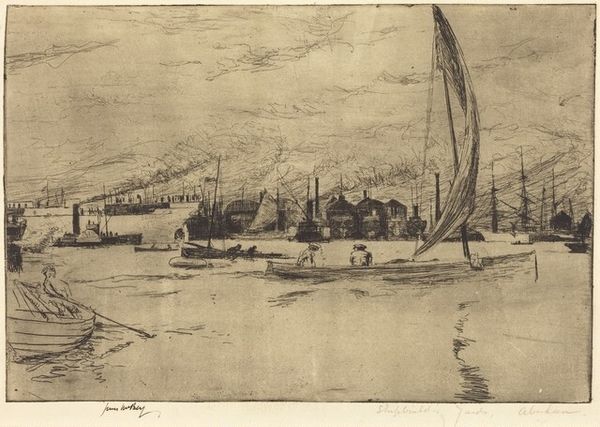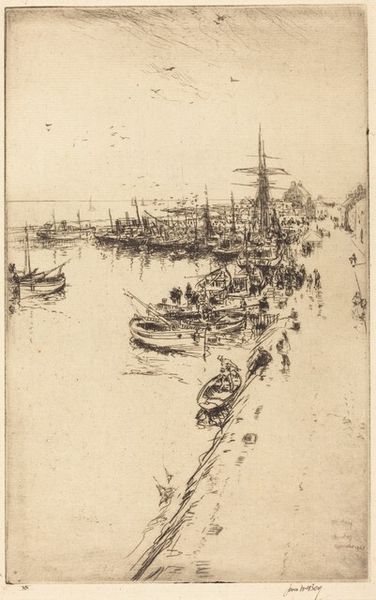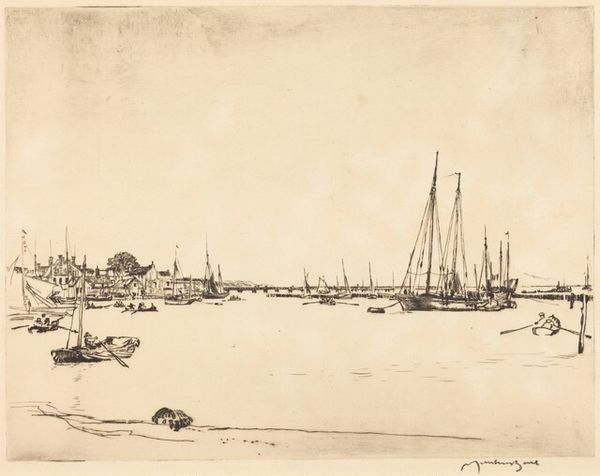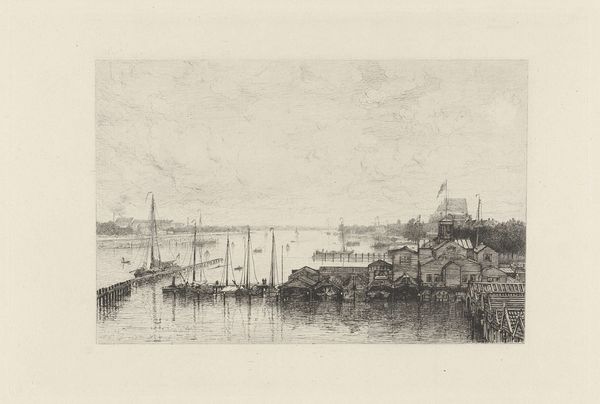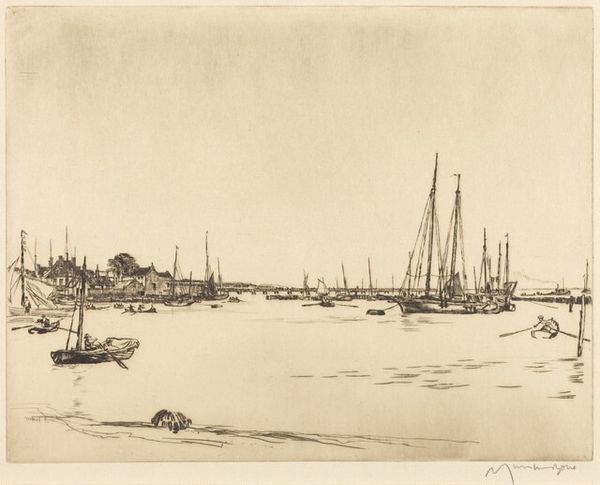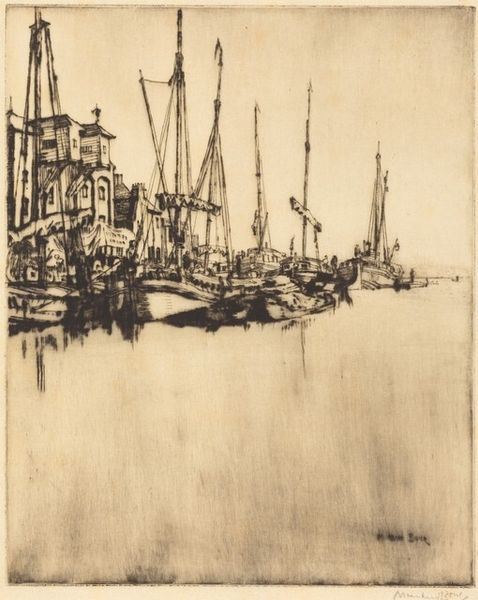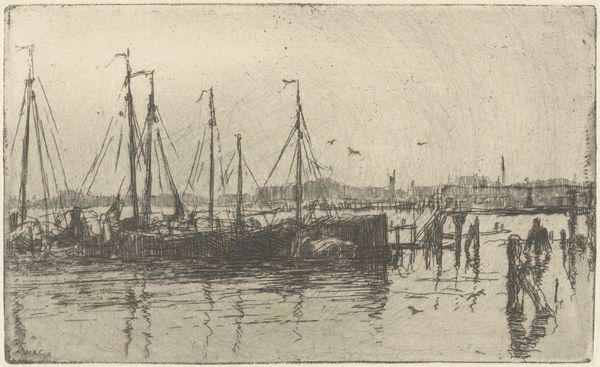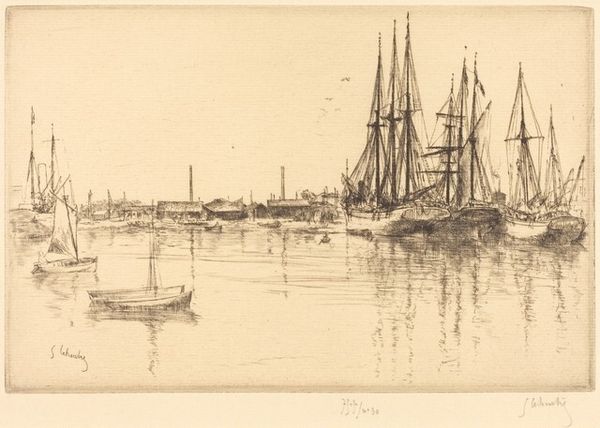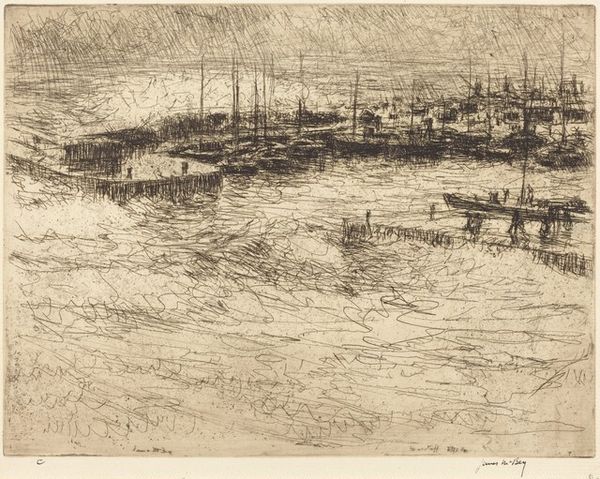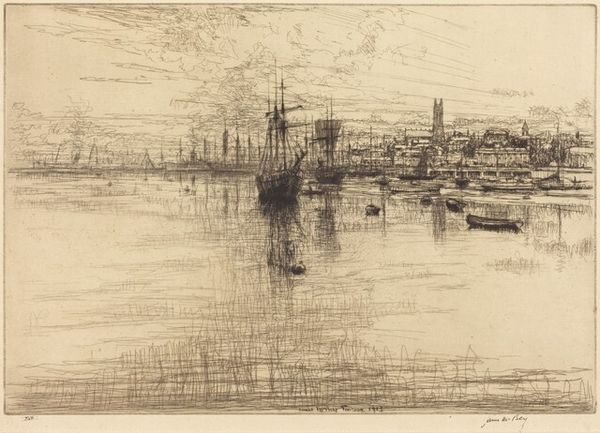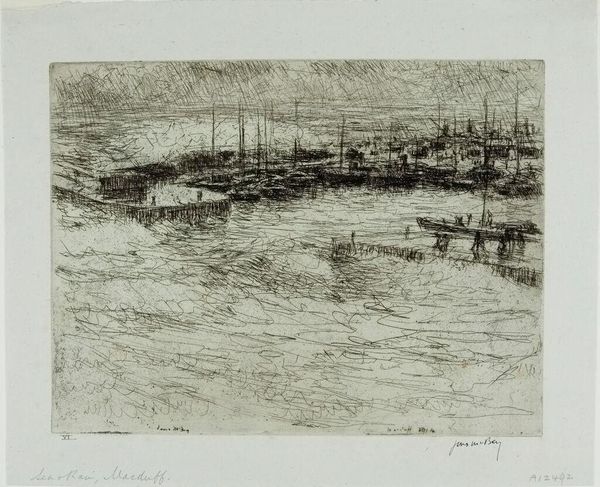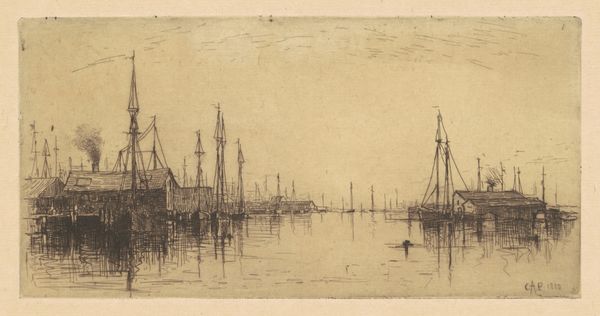
Copyright: National Gallery of Art: CC0 1.0
Editor: This is "Gamrie," an etching by James McBey from 1914. I'm immediately struck by its delicate, almost nostalgic feel. It reminds me of old photographs. What symbols or cultural memory do you see in this piece? Curator: The visual vocabulary is so interesting here. McBey offers a landscape almost entirely absent of color, focusing on line and composition. The etching medium lends itself well to this evocation of memory, where details might be faint yet familiar. Does the clustering of the boats along the pier suggest safety, perhaps even community to you? Editor: Absolutely. It also seems to imply a dependence on the sea. The boats look old, but they are together, as though surviving together. Curator: Indeed. The boats carry so many connotations – adventure, livelihood, isolation. Also notice the reflection on the water. Are those just ripples, or are those ghostly forms? I am always intrigued how much the artist suggests and how much they withhold. Do those abstracted shapes introduce uncertainty or perhaps even a sense of foreboding to you? Editor: It's subtle, but I think you're right. There is a sense of mystery under the surface, despite the familiarity of the scene. The birds in the foreground...are they departing or arriving? Curator: Ah, exactly! McBey taps into that eternal question: is the journey outward more perilous than the return? Consider this harbor as not just a place of industry, but also a symbolic threshold, echoing centuries of maritime folklore and anxieties about the unknown. The boats are more than wood and sail, they become emblems of hope and vulnerability, which persist across generations. Editor: I hadn't thought about it that way, but now I see those dualities so clearly! Thanks so much! Curator: My pleasure! The etching, in its muted way, speaks volumes about human experience across time.
Comments
No comments
Be the first to comment and join the conversation on the ultimate creative platform.

